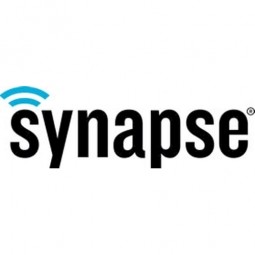
Technology Category
- Functional Applications - Remote Monitoring & Control Systems
- Networks & Connectivity - RF Transceivers
- Networks & Connectivity - RFID
Applicable Industries
- Buildings
Applicable Functions
- Maintenance
Use Cases
- Remote Asset Management
The Customer
Embedded Energy Technology
About The Customer
Embedded Energy Technology (EET)
The Challenge
Industrial facilities, municipalities, hospitals and universities nationwide depend upon steam carried through pipes to heat their buildings. Unfortunately, the reliability of steam systems also leads to them being forgotten or poorly maintained until it’s too late, resulting in uninsulated distribution components and faulty steam traps (leaks) that can lose hundreds or even thousands of dollars a day in wasted energy.
That’s why Embedded Energy Technology (EET) teamed up with Thermaxx Jackets to create a next-generation solution for steam pipe insulation. They wanted to develop a product that not only insulated pipes, but also used technology monitor the system for leaks and heat loss. Ideally this solution would install in minutes, have no wires, and avoid the need for costly construction.
The Solution
Looking for a faster way to market, EET researched several embedded, wireless hardware products before selecting Synapse’s SNAP-based RF modules. The 900 Mhz modules were the perfect choice as they were already FCC certified and ideal for signal strength underground (the most common location of steam pipes).
Also, the Synapse Portal software development tool made it easy to jumpstart their development of the solution. The software was robust enough to support out-of-the-box prototyping, but also flexible enough for quick customization within the final product. And any future system updates could be executed over the air.
Also, the Synapse Portal software development tool made it easy to jumpstart their development of the solution. The software was robust enough to support out-of-the-box prototyping, but also flexible enough for quick customization within the final product. And any future system updates could be executed over the air.
Quantitative Benefit

Case Study missing?
Start adding your own!
Register with your work email and create a new case study profile for your business.
Related Case Studies.

Case Study
Energy Saving & Power Monitoring System
Recently a university in Taiwan was experiencing dramatic power usage increases due to its growing number of campus buildings and students. Aiming to analyze their power consumption and increase their power efficiency across 52 buildings, the university wanted to build a power management system utilizing web-based hardware and software. With these goals in mind, they contacted Advantech to help them develop their system and provide them with the means to save energy in the years to come.

Case Study
Intelligent Building Automation System and Energy Saving Solution
One of the most difficult problems facing the world is conserving energy in buildings. However, it is not easy to have a cost-effective solution to reduce energy usage in a building. One solution for saving energy is to implement an intelligent building automation system (BAS) which can be controlled according to its schedule. In Indonesia a large university with a five floor building and 22 classrooms wanted to save the amount of energy being used.

Case Study
Powering Smart Home Automation solutions with IoT for Energy conservation
Many industry leaders that offer Smart Energy Management products & solutions face challenges including:How to build a scalable platform that can automatically scale-up to on-board ‘n’ number of Smart home devicesData security, solution availability, and reliability are the other critical factors to deal withHow to create a robust common IoT platform that handles any kind of smart devicesHow to enable data management capabilities that would help in intelligent decision-making

Case Study
Protecting a Stadium from Hazardous Materials Using IoT2cell's Mobility Platform
There was a need for higher security at the AT&T Stadium during the NFL draft. There was a need to ensure that nuclear radiation material was not smuggled inside the stadium. Hazmat materials could often be missed in a standard checkpoint when gaining entry into a stadium.

Case Study
Commercial Building Automation Boosts Energy Efficiency
One of the challenges to building automation is the multitude of non-interoperable communications protocols that have evolved over the years. Buildings have several islands of automation. Bridging the islands of different automation without losing the considerable investment in each specialized control network is the main focus in this solution.








